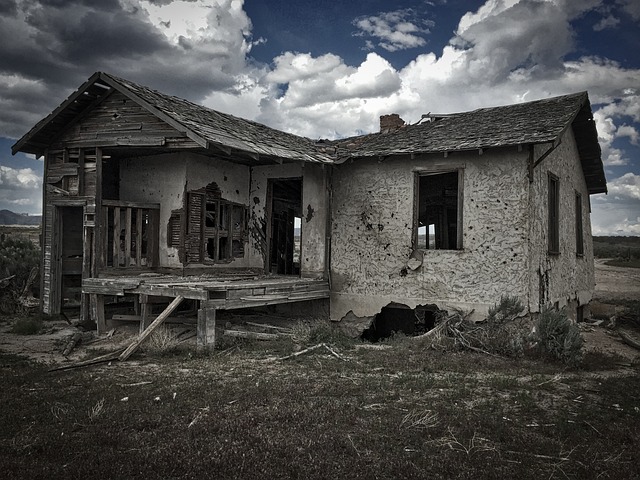Prioritizing quality materials over cheap alternatives is crucial for DIY projects to avoid future remodeling pitfalls. While cost-effective options may seem appealing, they can lead to long-term structural issues, reduced home value, and costly repairs. Investing in durable, high-quality materials ensures a home's longevity, maintains or increases its value, and prevents hidden problems like water damage or structural decay. Homeowners should be aware of these remodeling pitfalls and consider meticulous planning, research, and expert consultation to avoid them.
In the world of home improvement, it’s easy to get caught up in the excitement of DIY projects. However, navigating remodeling pitfalls can be costly if not done properly. This article uncovers common DIY errors that could significantly damage your home’s value, focusing on materials, contractors, permits, and design. By understanding these mistakes, you’ll be better equipped to avoid future regrets and ensure your home remains a valuable asset.
Poor Quality Materials: The Foundation of Future Regret
When embarking on a DIY project, one oft-overlooked aspect is the choice of materials—a decision that can have profound implications for your home’s value down the line. Using poor-quality materials can lead to significant remodeling pitfalls and future repairs, causing more harm than good. From warped wood to faulty plumbing, subpar components may seem cost-effective initially but often require expensive replacement or fixations in the long run.
This is particularly true for structural elements like flooring, roofing, and plumbing. Cheaper alternatives might save a few dollars upfront, but they can result in reduced longevity and increased maintenance costs over time. As such, it pays to invest in materials of sound quality, ensuring your home remains not just aesthetically pleasing but also structurally sound and financially valuable.
– Identifying low-quality materials during and after installation
Many DIY enthusiasts embark on home improvement projects with enthusiasm, but they often encounter remodeling pitfalls that can significantly impact their investment. One of the critical aspects to watch out for is using low-quality materials during the installation process. While cost-effectiveness is appealing, cheap materials may not meet the required standards and could lead to future damage. For instance, subpar flooring or fixtures might appear satisfactory initially but can warp, rot, or become prone to premature failure over time.
After the project is complete, homeowners should conduct thorough inspections to identify any signs of low-quality workmanship or materials. Look for gaps in installations, uneven surfaces, or poor-fitting components. Such issues could indicate that substandard materials were used, and addressing them promptly can prevent further damage and maintain your home’s value.
– Examples of common materials to watch out for
When tackling DIY projects, homeowners often focus on the creative aspect and visual appeal, but it’s crucial to be aware of potential remodeling pitfalls that could impact your home’s value. Common materials like laminate flooring, though appealing due to its affordability and ease of installation, might not withstand heavy foot traffic or show signs of wear and tear over time, diminishing the overall aesthetic and reducing resale value. Similarly, low-quality paint can peel or chip easily, revealing an uneven surface that requires constant touch-ups, becoming a financial burden and an eyesore.
Another material to watch out for is subpar plumbing fixtures and hardware. These are often overlooked during DIY transformations but can lead to significant issues like water damage, leaks, and inefficient water usage. Opting for durable, high-quality materials may initially seem like a higher expense, but it prevents future repairs and maintains the home’s value, ensuring a long-lasting and attractive space.
– Long-term effects on home value
While DIY projects can be rewarding and cost-effective, overlooking potential mistakes can have long-term repercussions on your home’s value. Remodeling pitfalls, such as poor workmanship or incorrect techniques, not only detract from the curb appeal but also impact the overall marketability of your property. Over time, these issues can escalate, leading to more extensive and costly repairs. For instance, a poorly installed roof or water-damaged walls can significantly reduce a home’s value and make it less attractive to potential buyers.
Additionally, DIY mistakes might not be immediately apparent, hiding beneath the surface as subtle signs of decay or structural problems. Unaddressed remodeling errors can create a domino effect, compromising the integrity of your home and necessitating more complex (and expensive) renovations down the line. Avoiding these pitfalls requires careful planning, research, and potentially seeking professional advice to ensure that any DIY efforts contribute positively to—rather than diminish—your home’s value.
When considering DIY projects, it’s crucial to be aware of potential remodeling pitfalls, especially when it comes to using poor-quality materials. These mistakes can significantly impact your home’s value over time. By being vigilant and informed about common materials to avoid, you can prevent future regret and ensure your home remains a valuable asset. Remember, even well-intentioned DIY efforts should be backed by quality inputs to yield desirable outcomes.
